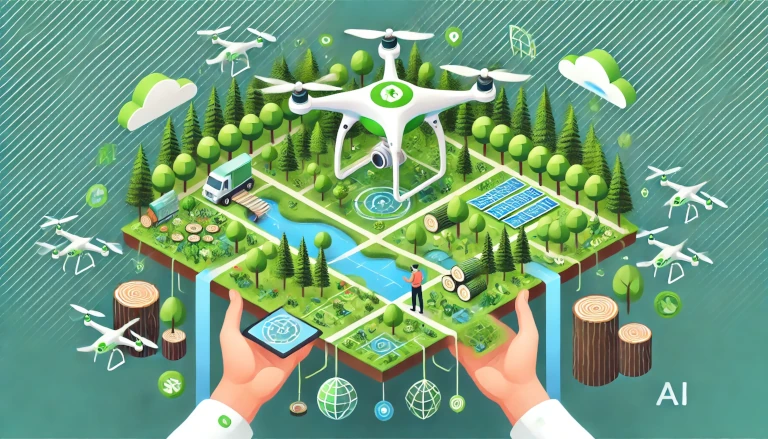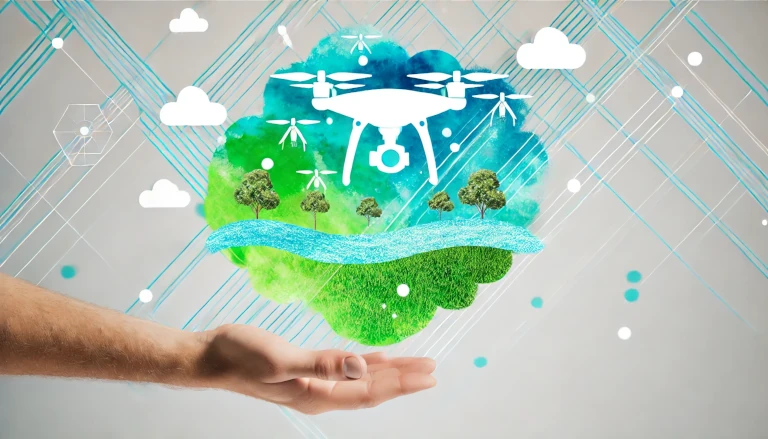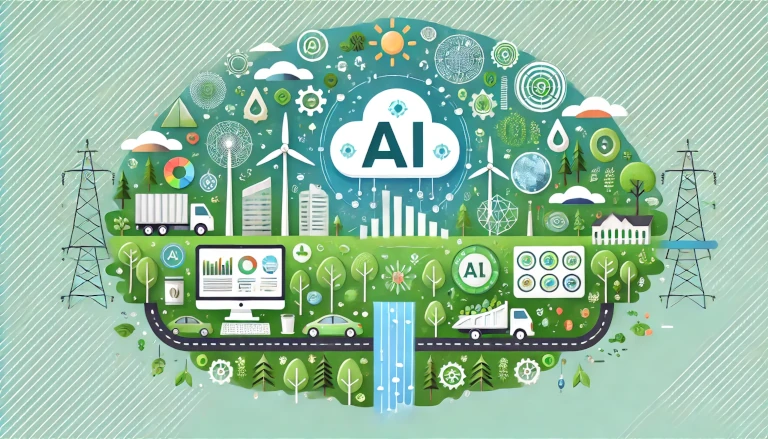Deforestation is one of the most critical environmental challenges facing the world today. The rapid destruction of forests is contributing to climate change, loss of biodiversity, and ecosystem degradation. However, with the advent of Artificial Intelligence (AI), we now have advanced tools to help monitor, predict, and reduce deforestation. In this blog post, we will explore how AI technology is being used to combat deforestation, provide real-world examples, and explain the potential benefits AI offers in the fight to save our forests.
How AI Helps Combat Deforestation
- Satellite Monitoring and Image Analysis
One of the most effective ways that AI is helping to address deforestation is through satellite imagery analysis. Satellites continuously capture images of forested areas, and AI systems can analyze these images to detect deforestation patterns in real time. Traditional methods of monitoring deforestation rely on manual inspections, which are time-consuming and prone to errors. AI-driven systems, on the other hand, can quickly analyze large datasets, identify areas of concern, and provide alerts about illegal logging or land clearing activities.
For instance, platforms like Global Forest Watch use AI to process satellite images, making it easier to identify where forests are being lost. This system helps governments and conservation organizations take quick action to protect vulnerable areas.
- Drones and AI for Forest Monitoring
Drones equipped with AI technology are increasingly being used to monitor forests. These drones can fly over large forested regions, capturing high-resolution images and videos. AI algorithms then analyze this data to detect changes in forest cover, illegal logging, or even forest fires.
For example, in the Amazon rainforest, conservationists use AI-powered drones to patrol and monitor the vast jungle. The AI in the drones can automatically detect illegal activities such as unauthorized logging or the presence of deforested areas that were previously unnoticed by satellite monitoring.
- Predictive Analytics for Forest Health
AI can help predict deforestation trends by analyzing historical data and environmental factors like rainfall, temperature, and human activity. Predictive models can be used to forecast areas at risk of deforestation, allowing governments and conservationists to take preventative measures before the damage occurs.
For instance, by combining AI with weather data, forest health data, and human activity, scientists can predict which regions are most vulnerable to illegal deforestation and poaching. These insights help focus conservation efforts on areas most at risk.
- AI-Assisted Reforestation
Not only does AI assist in preventing deforestation, but it also helps in reforestation efforts. AI-powered systems are being used to identify the best areas for reforestation and the most suitable tree species for planting. This helps maximize the impact of reforestation projects by ensuring that the right trees are planted in the right areas, optimizing ecosystem recovery.
For example, Dendra Systems uses drones and AI to plant trees in deforested areas. The drones can plant thousands of seeds per day in carefully selected areas, and AI algorithms determine the best locations for reforestation efforts, making the process more efficient.
- Tracking Illegal Logging with AI
Illegal logging is one of the leading causes of deforestation. AI can be used to track logging activities in real-time, making it easier to detect and stop illegal logging operations. AI algorithms can be trained to analyze satellite images, identify logging trucks, and detect changes in forest cover that indicate illegal activities.
In Indonesia, AI-driven monitoring systems track logging activities and alert authorities when illegal operations are detected. By catching these activities early, AI helps reduce the impact of illegal logging on forest ecosystems.
Real-Life Examples of AI Solving Deforestation Problems
- Global Forest Watch: This platform uses AI to analyze satellite imagery and detect deforestation patterns in real-time. Conservationists and governments can use the insights provided by Global Forest Watch to take action against deforestation quickly.
- Rainforest Connection: Using AI-powered devices, this initiative detects the sounds of chainsaws and other signs of illegal logging in rainforests. The system sends alerts to authorities, enabling them to respond immediately to illegal activities.
- Dendra Systems: This company uses AI-driven drones to carry out reforestation by planting trees in deforested areas. The AI system analyzes the landscape to determine the best places for planting, helping maximize the success of reforestation projects.
Advantages of Using AI to Combat Deforestation
- Efficiency: AI can process vast amounts of data in real-time, allowing for faster detection of deforestation activities than traditional methods.
- Precision: AI can detect deforestation patterns that may not be visible to the human eye, making it easier to identify small-scale illegal logging or habitat destruction.
- Cost-Effective: AI-driven solutions reduce the need for expensive, large-scale manual inspections and patrols, making forest conservation efforts more affordable.
- Scalability: AI-powered tools can be scaled to monitor vast areas of forest, from the Amazon to small local forests, ensuring wide-reaching impact.
Conclusion
Artificial Intelligence offers powerful tools to help solve the complex problem of deforestation. From satellite imagery analysis to drones and predictive models, AI is playing a vital role in monitoring, predicting, and preventing deforestation. As we continue to refine AI technologies, their ability to protect our forests and support reforestation efforts will only grow stronger. By embracing AI, we can take significant steps toward a more sustainable future and preserve the planet’s critical ecosystems.
Discover more from Green Ecosystem - Renewable Energy, Agriculture, and Environmental Sustainability
Subscribe to get the latest posts sent to your email.


